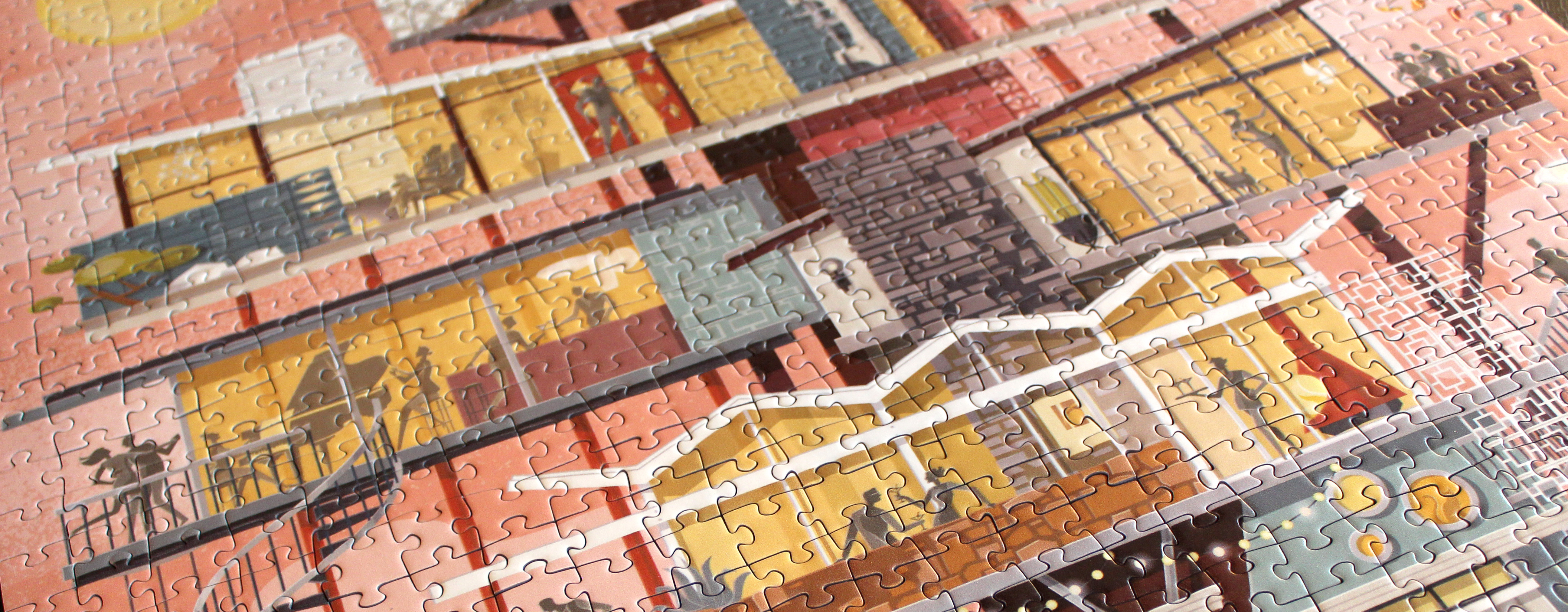
I begin the process on the computer because it allows me to explore with shapes in ways that would be time-intensive by hand. I start by doing what I call “block-ins”, which are just very rough shapes, primarily so I can play with placement, flow, and balance of the elements within the artwork. Once I’m happy with the basic structure, I start expanding on the concepts. The artwork continues to evolve, sometimes radically, until it feels finished.
Desert Sunset, the primary image that all three puzzles are based on, took a lot of time from concept to final art. Since it was a personal project, I had the luxury of taking my time and getting everything just the way I wanted it. Often that meant not looking at it for extended periods of time and coming back to it with fresh eyes and ideas. The most challenging aspect is getting everything to fit together, have a flow, and developing a color palette that pulls everything together. In working through these challenges, I keep the story of the illustration in my head, which helps bring everything into focus.
My family has done puzzles together since I was a kid so I love them. Over the years I’ve learned that the puzzles I like best are those that use a limited color palette because it adds a whole layer of challenge to the experience. When there are large fields of similarly graded color, you have to rely on subtle changes in texture, pattern, or other elements to help place each piece, which isn’t always easy. Puzzles should be a little hard, but not so hard that they aren’t fun. I wanted to create artwork that I felt would have the right mix of fun and challenge.